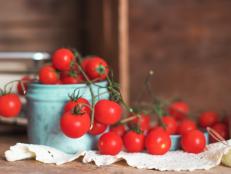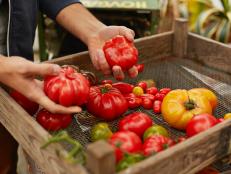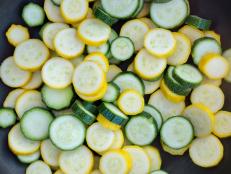How to Store Leafy Greens
Say goodbye to wilted lettuce and mushy kale. Keep greens fresh and make them last longer with a few tips.

maribee / Getty Images
Get a Premium Subscription to the Food Network Kitchen App
Download Food Network Kitchen to sign up and get access to live and on-demand cooking classes, in-app grocery ordering, meal planning, an organized place to save all your recipes and much more.
By Regan Cafiso for Food Network Kitchen
Leafy greens are an important part of a healthy diet — and they go way beyond salad. Kale, broccoli rabe and Swiss chard are just a few varieties that add a nutritious boost — not to mention color and vibrancy — to pasta, sides, egg dishes, casseroles and more. With proper storage, greens can keep for a week or longer in the refrigerator. Follow these guidelines to stock up confidently with no food waste.
How to Store Tender Salad Greens
Mesclun, butter lettuce, arugula and baby spinach are delicious in salads and other fresh dishes. But these baby greens are delicate and must be stored correctly. If you bought a plastic "clamshell" of washed greens, your best bet is to store them in the fridge right in the container. Make sure to keep it tightly closed.
If you bought loose greens, here's what to do: Start by washing them. You’re most likely to use up your greens if they are clean and ready to eat, and they’ll last longer, too. Pick out any wilted pieces and separate heads of lettuce. Submerge the greens in a bowl of cold water (you may need to do this a few times if they are very dirty), then gently lift and dry in a salad spinner. Make sure the greens are very dry — excess water will shorten their shelf life.
Next up is storage. Depending on how much refrigerator space you have, there are two great ways to store your greens. You can lay them out on a length of paper towels, loosely roll the towels and place the roll into a resealable plastic bag. Store this in the crisper drawer. When you need greens, you can take what you need, re-roll and return to the fridge. The same method can be used for herbs.
If you have a little more space, a lidded container works even better. Line the bottom with paper towels, then loosely fill with clean, dry greens. Add another layer of paper towels and secure the lid. The sturdy container will protect your greens from getting crushed or bruised in the fridge and will also keep them fresh.
How to Store Hearty Bunched Greens
Kale, Swiss chard, collards and broccoli rabe are hearty greens that can withstand cooking. These veggies grow during cooler seasons, so they feel right at home in your cold refrigerator, and can last a week or longer if stored properly. What they don't like are excess moisture or dry refrigerator air. As mentioned above, tender salad greens can be plucked from the supermarket shelf and stored safe and dry right in their clamshell containers. Kale and other hearty bunched greens, however, usually sit on an open market shelf where they are misted with water throughout the day. This keeps them fresh and vibrant at the grocery store, but if you stuff them into a plastic bag while wet, then toss them in the fridge, that's a recipe for rot. On the flipside, if you put the greens in the fridge with no covering at all, they will quickly dry out and wilt. So how to handle this conundrum? Similar to tender greens you must clean and dry them first, then wrap and store.
Start by removing any tough stems, so that your greens are ready to use when you want them. If you like, you can even tear or slice them into bite-size pieces. From there, wash your greens and spin them dry. It's crucial to get them as dry as possible, so you might need to spin them a couple times.
Lay the clean, dry leaves on paper towels, loosely roll into a cylinder and place in a zip-top baggie. Alternatively, you can line a large airtight container with paper towels and loosely fill it with greens. Top with another paper towel layer and snap on the lid. Store in a cold part of the fridge.
Is There a Plastic-Free Option for Storing Greens?
Have you given single-use plastics and paper towels the boot? We have some eco-friendlier options for kitchen storage. Reusable bins are a great bet — if you’re avoiding plastic, try glass or Pyrex. Leave out the paper-towel lining or use thin, clean cotton towels. Silicone zipper bags are also reusable and work well. Lay your cleaned greens on a damp, lightweight kitchen towel before rolling and storing.
One thing to keep in mind when going green. Reusable cotton or mesh drawstring bags are a wonderful, eco-friendly alternative to plastic produce bags for transporting veggies home from the store, but they are not good for storage. The well-ventilated material will quickly wilt and dry out greens. If you use these produce bags, you should still clean, dry and store your greens according to one of the methods listed above.
Recipes to Try:
Related Links:
































































